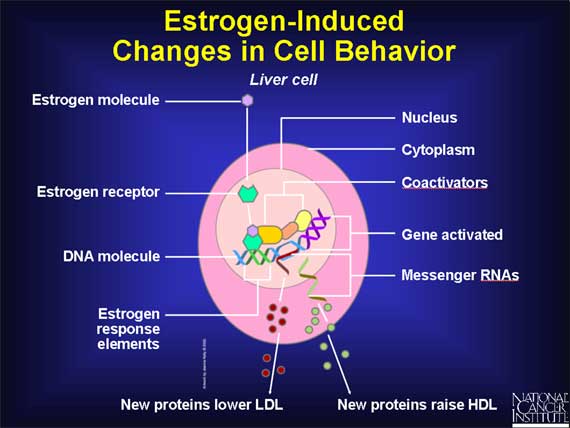|
In liver cells, for example, estrogen alters the production of proteins that influence cholesterol levels in the blood.
Cholesterol does not readily dissolve in blood, so before it can be transported through the body, it first becomes bound to special cholesterol-carrying proteins called lipoproteins. The liver produces two such lipoproteins, called low-density lipoprotein (LDL) and high-density lipoprotein (HDL). LDL-cholesterol is considered to be the "bad" form of cholesterol because it tends to release cholesterol directly onto the inner wall of arteries, creating the "plaque" that can lead to heart disease. In contrast, HDL is considered to be the "good" form of cholesterol because it inhibits the formation of plaque and carries cholesterol away from the arteries and back to the liver.
The net effect of estrogen's action on liver cells is to increase the amount of HDL cholesterol and to decrease the amount of LDL cholesterol. By increasing HDL and decreasing LDL, estrogen helps to lower the risk of heart disease.

< Previous | Index | Next Slide > |